Canada Thistle
A strong competitor for light, moisture and nutrients, Canada thistle can cause greater crop losses than any other broadleaf weed in Western Canada.
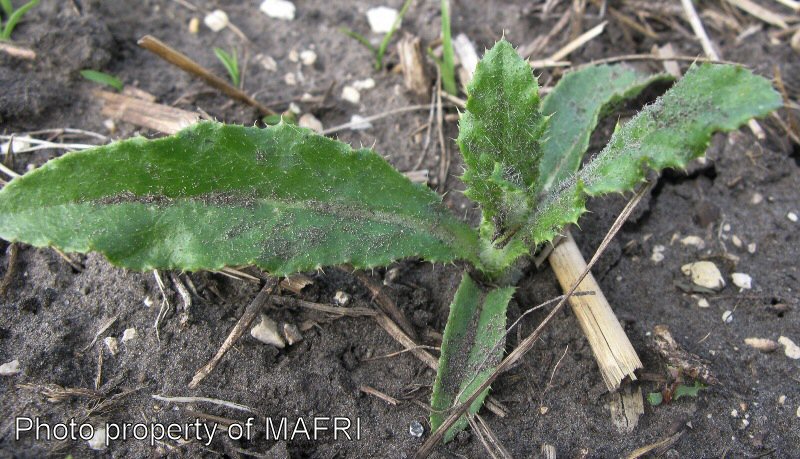 click to enlarge |
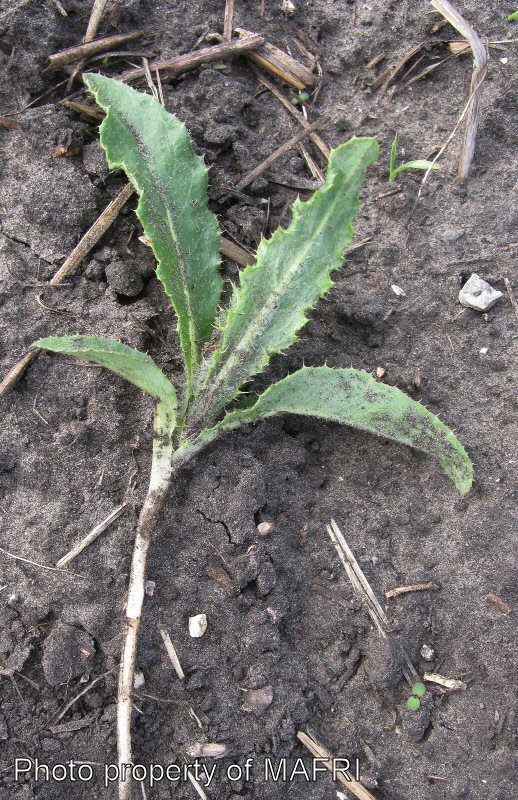 |
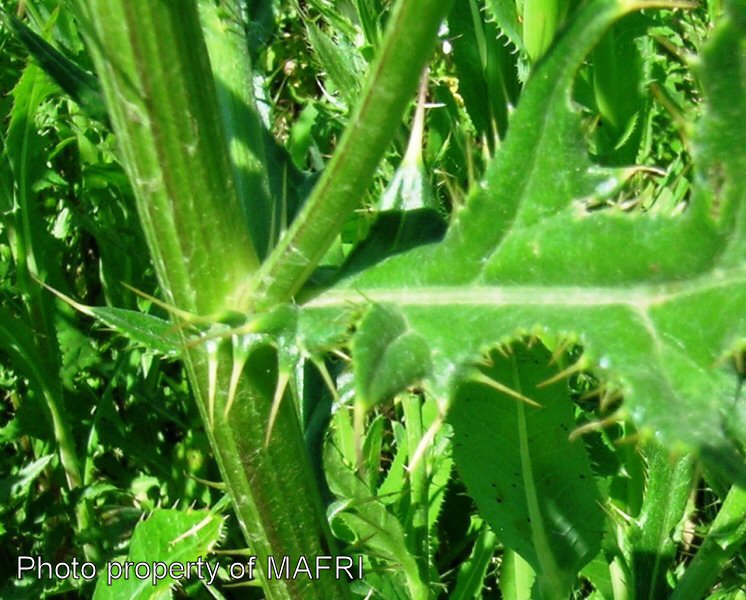 |
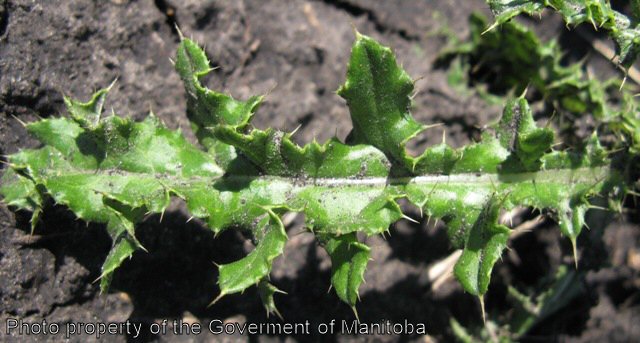 |
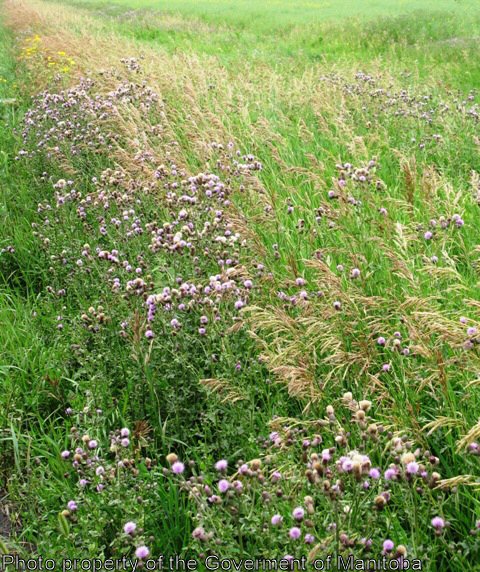 |
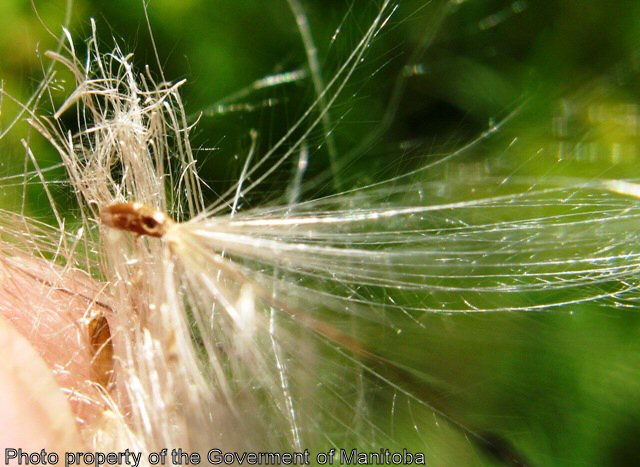 |
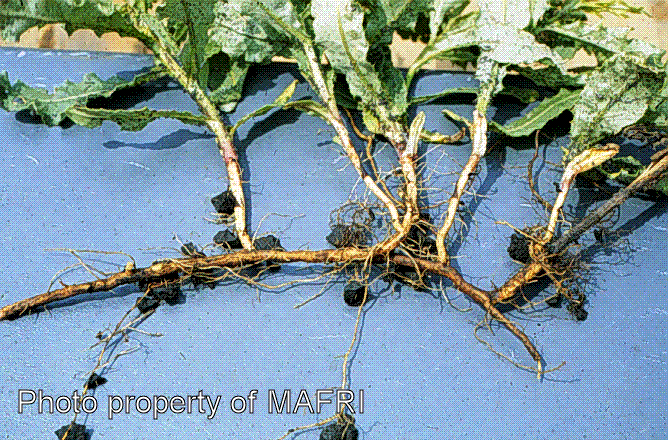 |
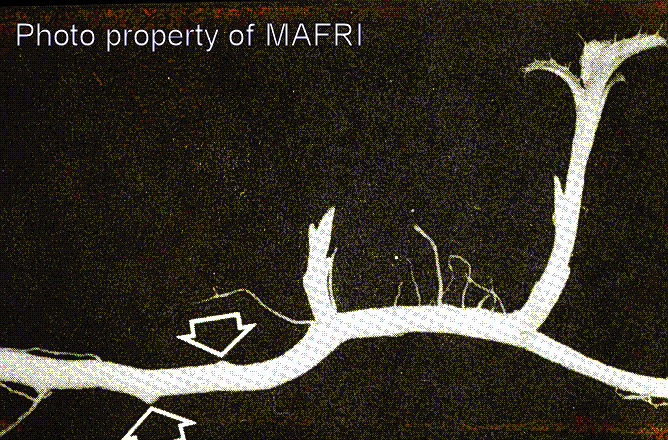 |
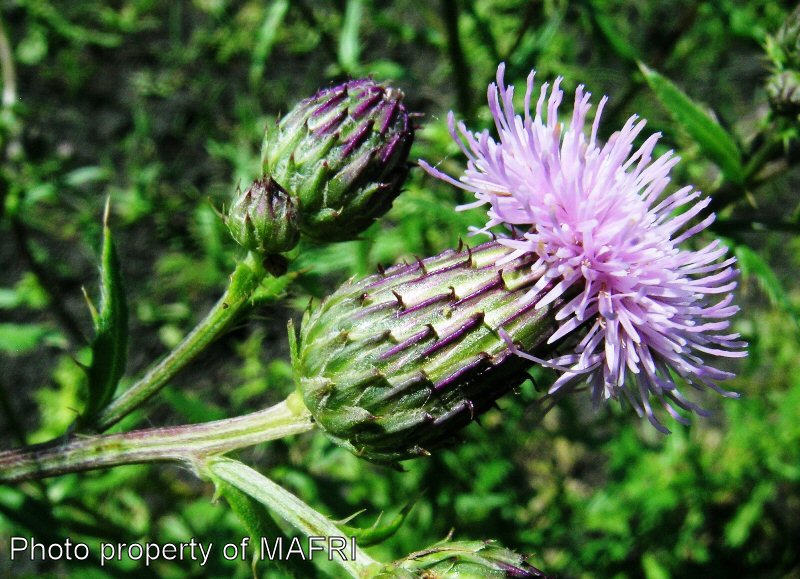 |
Biology
A perennial, it reproduces with seed and freely sprouting, horizontal root stalks. The stalks run 15-30 cm (6-12 in.) below the surface. Established plants spread laterally by producing creeping horizontal roots. These roots can send up new shoots at intervals of 5-15 cm (2 to 6 in.) and spread more than 6 m (20 ft.) in one year, producing a network of root growth measuring 485 m (1600 ft.) in total length.
Canada thistle also spreads by seed with the help of pappi attached to the seed. This parachute-like attachment allows the seed to be borne by wind, carrying it as far as 60 metre (200 ft.) from the mother plant.
Branching horizontal and vertical roots contain an abundant food reserve. Carbohydrates stored in the roots fuel the growth of new shoots each season. A typical infestation produces 13-18 shoots per square metre (sq yd.). It grows in cultivated fields, pastures, roadsides, rights-of-way and undeveloped areas.
The seedling has oblong cotyledons. The leaves are oval to spear-shaped. The margins have numerous triangular indentations and sharp spines. The seedlings are weak competitors if they are shaded by the crop.
In the mature plant, the stems are erect, hollow, 30-120 cm (1-4 ft.) high, branching only at the top. The leaves are alternate, oblong, or lance shaped. They are slightly clasping and deeply and irregularly cut into segments with sharp spines. The purple, pink or white flowers are present in groups at the ends of branches. Canada thistle produces about 700 seeds per plant. The seeds are brown with lightly-attached white hairs.
Scouting Techniques
Take a minimum of 20 weed counts across the field. Canada thistle often occurs in large patches near field edges, shelterbelts, sloughs or potholes, and dug-outs. Sometimes you may see caterpillars of the painted lady butterfly (see page 28) feeding on Canada thistle.
Effects On Crop Quality
Canada thistle can slow harvesting. Green matter in harvested grain can increase drying costs and dockage.
Threshold/Yield Loss
The weed competes for light, moisture and nutrients. Even light infestations will cause yield losses in field crops, horticultural crops and forages. Studies show that 20 Canada thistle shoots per square metre (sq. yd.) can reduce canola yield by 24%. In wheat, 14 shoots per square metre (sq. yd.) can reduce yields by 38%.
Yield losses as high as 60% in cereals have occurred. One study indicated that 10 thistle shoots per square metre (sq. yd.) reduced barley yields by roughly 20%. Another showed that 2 thistle shoots per square metre (sq. yd.) reduced wheat yields by about 15%. Ten shoots per square metre (sq. yd.) can reduce winter wheat yields by about 20%.
Control Tips
Canada thistle requires a multi-year, integrated control strategy. This could include tillage, patch mowing, in-crop herbicides, and pre-harvest and post- harvest herbicides. The plan must include proper crop rotation. Avoid crops with poor competitive ability and no in-crop herbicide options (e.g., lentils, field peas). The key to control is recognizing the problem and being persistent with control measures.
A typical seedling in the 2-leaf stage, 14 days after emergence, will have a root that is 15 cm (6 in.) long, with as many as 18 lateral roots. At this early stage, it does not have a perennial root, so it can be killed by cultivation. However, a 3-week-old seedling can regenerate after the top-growth is clipped. Seedlings are also controlled easily with herbicides.
Tillage in late fall gives poor to excellent control. Late fall tillage, on average, reduces the number of shoots by 20%. The following season most shoots on fall tilled fields emerge 1 month later than do shoots on un-tilled fields. This delay in emergence can give the crop a strong competitive advantage. However, tillage can also aggravate a thistle problem. Small fragments often survive adverse conditions. Under favourable conditions, even a 1.25 cm (1/2 in.) length of root can generate new growth.
The top growth can be controlled in a number of crops by spraying broadleaf herbicides that suppress growth. Once absorbed, they move through the plant to the growing points in the shoots and roots. Because Canada thistle has a massive capacity to produce roots and shoots eventually growing up as new plants, killing the top-growth is like giving thistle a haircut. The only way to control the entire root system is to use a herbicide that translocates deeply into the roots. Pre-harvest glyphosate and herbicides containing clopyralid are effective at controlling Canada thistle.
a thistle.
